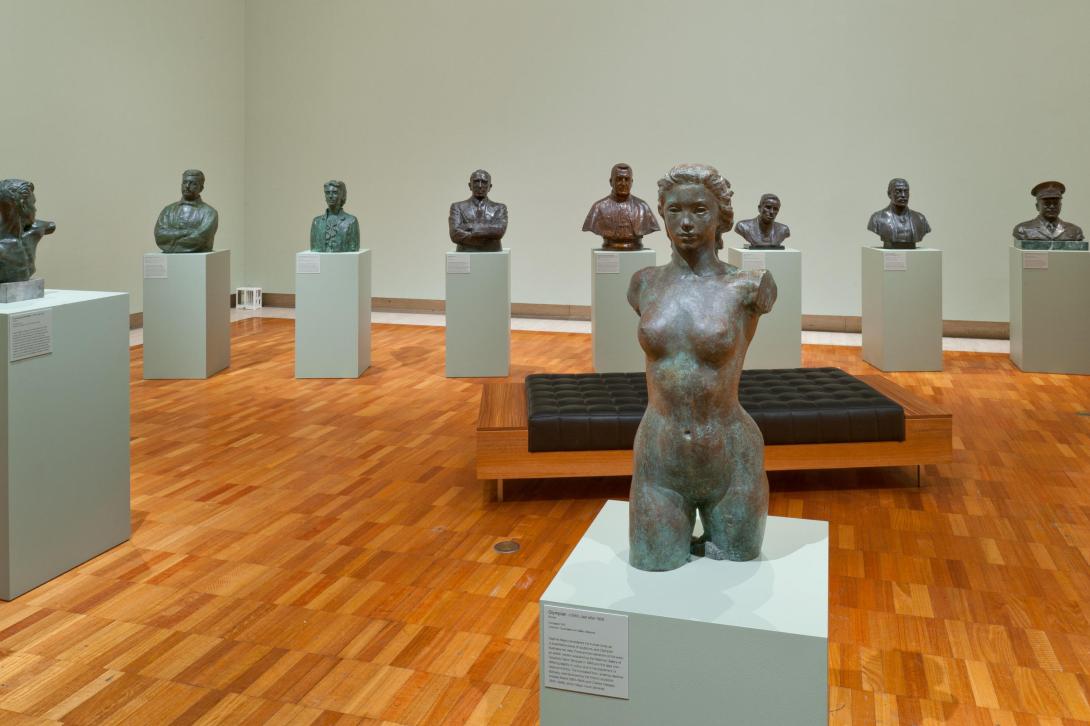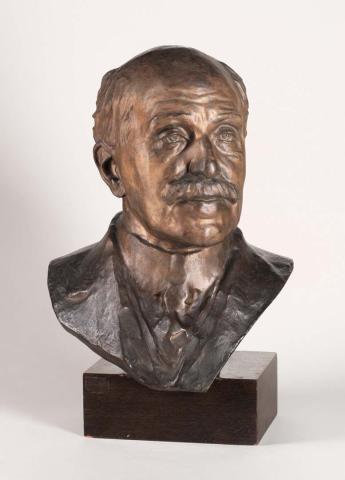Daphne Mayo: A monumental career
By Judith McKay
‘Let There Be Sculpture’ November 2011
‘Let There Be Sculpture’ honours the life and work of one of Queensland’s most significant artists. Daphne Mayo (1895–1982) was Australia’s leading woman sculptor of the mid twentieth century, and also a passionate advocate for the visual arts, who succeeded in creating cultural opportunities for her fellow Queenslanders. Both aspects of her career are explored in this exhibition.
A woman of courage and commitment, Mayo resolved early on to become a sculptor. In 1911, she enrolled at Brisbane’s Central Technical College, studying under R Godfrey Rivers and LJ Harvey. Upon graduation in 1914, she was awarded Queensland’s first publicly-subscribed travelling art scholarship, enabling her to continue her studies at London’s Royal Academy of Arts. In 1923, she received the gold medal for sculpture — the Academy’s highest honour — which earned her a scholarship to Italy.

Feature image: Works by Daphne Mayo on display in Gallery 14, QAG, January 2012 / © Surf Lifesaving Foundation and The United Church in Australia Property Trust (Q.) / Photograph: R Fulton, QAGOMA
In 1925, Mayo returned to Brisbane in triumph. At the time, the city was experiencing a building boom and there were pleas to keep ‘our girl sculptress . . . constantly employed’. She was soon to create some of Brisbane’s grandest monuments, including the City Hall tympanum. In 1937, after a decade of great productivity, she travelled overseas to observe recent developments in art and, in 1940, she moved to Sydney.
As this exhibition shows, Mayo’s work was diverse in style, subject matter and medium, ranging from portrait busts to architectural ornaments; official commissions to creative, modernist experiments; and included ceramics, paintings, drawings and woodcarvings, as well as sculptures.
Though her work was varied, Daphne Mayo always maintained her commitment to craftsmanship and, even while experimenting with Modernism, never lost her interest in figurative sculpture. She regarded the human body as ‘a superlative piece of sculpture’ and her constant inspiration, defining ‘the mastery of human anatomy in simplified beautiful forms’ as her lifelong goal.

Portrait of Lloyd Rees c.1944
- MAYO, Daphne - Creator

Self portrait 1952
- MAYO, Daphne - Creator

‘Daphne Mayo: Let There Be Sculpture’
Nov 2011 - Jan 2012
Digital story context and navigation
Explore the story

‘Daphne Mayo: Let There Be Sculpture’
Nov 2011 - Jan 2012

Daphne Mayo: A world of statues
Read ESSAY
Daphne Mayo: A monumental career
Read DIDACTIC
Daphne Mayo’s legacy to QAGOMA
ReadRelated resources
